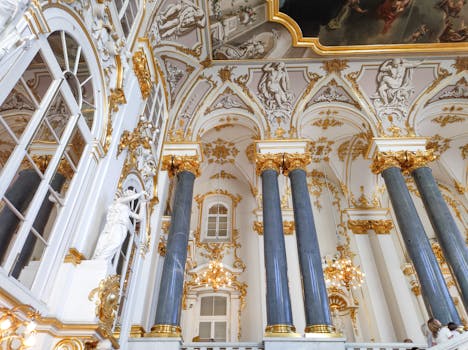
Traveling Through Time: How Europe’s Historical Heritage Shapes Modern Lifestyles in 2025
Traveling Through Time: How Europe’s Historical Heritage Shapes Modern Lifestyles in 2025. Europe, a continent steeped in history and tradition, continues to fascinate visitors from around the world with its rich cultural heritage. From the ancient ruins of Greece and Rome to the modern cities of London and Paris, Europe’s historical legacy can be seen in every aspect of modern life. In this article, we will explore how Europe’s historical heritage shapes modern lifestyles in 2025, and what this means for travelers and locals alike.
The Influence of Art and Architecture
One of the most visible ways in which Europe’s historical heritage shapes modern lifestyles is through its art and architecture. From the Renaissance masterpieces of Italy to the Gothic cathedrals of France, Europe’s artistic and architectural legacy is unparalleled. Many of these historical buildings and landmarks have been beautifully restored and preserved, and continue to inspire modern artists, architects, and designers. For example, the iconic Eiffel Tower in Paris, built for the 1889 World’s Fair, remains one of the most recognizable landmarks in the world, and continues to influence modern architecture and engineering.
The Preservation of Cultural Traditions
Europe’s historical heritage also shapes modern lifestyles through the preservation of cultural traditions. Many European countries have a strong sense of national identity, which is often tied to their historical heritage. For example, the traditional folk music and dance of Ireland, the flamenco of Spain, and the opera of Italy are all important parts of these countries’ cultural identities. These cultural traditions continue to thrive in modern Europe, with many young people learning traditional music, dance, and crafts from their elders. This preservation of cultural heritage helps to create a sense of continuity and connection to the past, and is an important part of what makes Europe so unique and fascinating.
The Impact of Historical Events on Modern Society
Europe’s historical heritage also shapes modern lifestyles through the impact of historical events on modern society. For example, the two World Wars of the 20th century had a profound impact on European society, leading to the formation of the European Union and the creation of a more integrated and peaceful continent. The fall of the Berlin Wall in 1989 marked the end of the Cold War and the beginning of a new era of European history. These historical events continue to shape modern European society, with many Europeans placing a strong emphasis on peace, tolerance, and cooperation. This is reflected in the modern lifestyles of Europeans, who tend to prioritize work-life balance, social welfare, and environmental sustainability.
The Future of Europe’s Historical Heritage
As we look to the future, it is clear that Europe’s historical heritage will continue to shape modern lifestyles in 2025 and beyond. With the rise of digital technology and social media, it is easier than ever for people to learn about and engage with Europe’s historical heritage. Many historical landmarks and museums are now offering virtual tours and online exhibitions, making it possible for people to experience Europe’s rich history from anywhere in the world. At the same time, there is a growing recognition of the importance of preserving Europe’s historical heritage for future generations. Many European countries are investing in the restoration and preservation of historical buildings and landmarks, and there is a growing movement to protect and promote Europe’s cultural heritage.





